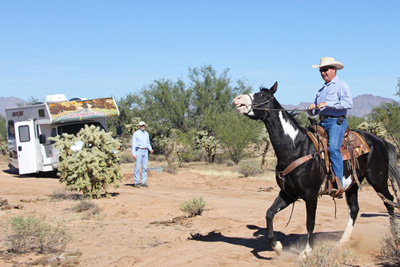The border-monitoring system − known as Helios − consists of fibre-optic cables, lasers and detectors. More accurately described as a distributed acoustic sensor, it relies on the phenomenon of optical backscattering for its operation and is made by British company Fotech Solutions.
In use, the system transmits laser pulses through fibre-optic cables buried in the ground. The small vibrations caused by a moving object on the surface above hit the fibre-optic cables, slightly distorting them. The distortion creates a unique signature change in the laser pulses, which can be detected by a Helios detector at one, or both, ends of the cable.
Helios is sensitive enough to detect a dog and can discriminate between people, horses and trucks. The system can be set to avoid being triggered by small animals and can also tell if people are running, walking or digging and in which direction.
The resolution of the cable can be set to one-metre intervals, which means that people, or vehicles, can be pinpointed instantly to within one metre along a section of cable that can be up to 50km long.
These 50km cable lengths, each with a Helios detector, could be strung together indefinitely to cover vast distances. The border between the US and Mexico is 3,169km and, although the extreme topography of some border areas would make cable deployment difficult, dividing the border length into 50km segments equates to approximately 64 cable sections and detector units.
For this and many other reasons, the researchers say that it is too soon to estimate the cost of monitoring the US-Mexico border, but they believe that the cost would be significantly lower than the ineffective barriers deployed to date, such as steel fences, disconnected grids of sensors or hi-tech virtual fences.
Hampshire-based Fotech is already working on automating the operation of the Helios system. Once a database of signals has been built up over an extended period of time, advanced pattern-recognition software could be employed to automatically identify events that the system detects. The system would then generate an alert if the software determined that a border crosser was being detected.

Zonge, a geophysical engineering company based in Tucson, Arizona, has signed a two-year agreement with Fotech to develop a border-security application based on the system. The next step is a limited deployment along a stretch of border with a known high volume of border-crossing traffic. Zonge is seeking funding for the extended field trial − results from which would most likely be released at the discretion of the funding agency.
Zonge is also considering working with a technical partner that could provide large-scale analysis and storage of the volumes of data that the test system will gather.





April 1886: the Brunkebergs tunnel
First ever example of a ground source heat pump?